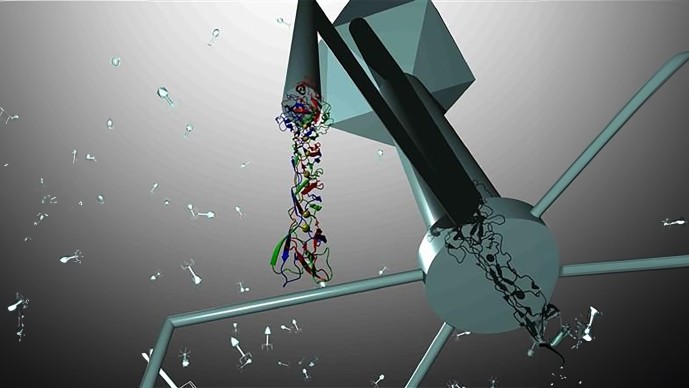Addressing Newborn and Infant Gut Health through Bacteriophage-Mediated Microbiome Engineering
- Brad Zamft, Sep 7, 2015

We have just completed our review of the first round of proposals for the Grand Challenges Explorations topic entitled “Addressing Newborn and Infant Gut Health through Bacteriophage-Mediated Microbiome Engineering,” and we are happy to report we received a robust response, with over 170 applications, 112 of which were deemed “responsive” to the call. Choosing amongst those highly technical and sophisticated proposals was quite a challenge, so much so that we ended up selecting 12 finalists, instead of the originally-intended 10 proposals. Still, we feel like we have left a lot of great ideas on the table.
Now’s our second chance. The new request for proposals is posted here. If you didn’t get funded in this past round, be heartened and do please re-apply. But we also shouldn’t miss this opportunity to learn from what we got. So we’d like to take this chance to comment on what we did and did not see in the previous round.
First off, the CRISPR revolution was alive and well within our applicant community. Nearly a quarter of all applications that were deemed responsive contained the word CRISPR in them. While that’s exciting in that it is a clear sign that synthetic biology might have found a truly transformational tool, it also means that, as part of the portfolio, we could only take a few of those proposals. Therefore, if you are planning on proposing a CRISPR-based strategy for this round, you should consider how novel it would be compared to your peers; endowing a broad-host bacteriophage specificity by targeting the 16S rRNA will likely not be funded again in this round.
On the topic of broad-host bacteriophage: there were a large number of proposals that aimed to engineer P1 and other temperate bacteriophage. As has been pointed out many times in the literature, there are concerns the therapeutic use of temperate bacteriophages due to the potential development of lysogen immunity to superinfection, the carrying of virulence genes, and – most importantly – generalized transduction.[1] While such problems should not exclude exploratory research – especially those proposing to develop bacteriophage as a research tool and not a therapeutic – it was nonetheless surprising that more applications did not address these issues head on. We have therefore added to the request for proposals a requirement that if you are proposing to use temperate bacteriophage in your research, you should at least discuss overcoming these challenges. It doesn’t mean we will reject any application proposing to use temperate bacteriophage – or even ones that don’t have all the answers on how to mitigate their challenges – but we do want to make sure researchers are thinking about these problems from the outset.
Likewise, we added a bullet to what we would consider funding, recognizing that there may be regulatory hurdles in the development of bacteriophage tools or therapies that may be mitigated by elegant technical solutions. If you have one of those, please identify the risk and propose your solution, keeping in mind that this topic is more focused on the development of tools that allow us to probe the microbiota, rather than downstream development of actual therapies in humans.
In contrast to the numerous CRISPR applications received, we were surprised that we did not get many applications really trying to leverage omics and computational modeling. We are waiting for that knockout proposal (pun-intended) that uses the systematic deletion of one or more pathogens resultant from bacteriophage therapy, high-throughput, time-resolved omics, and computational modeling to really understand the principles underlying the organization of the microbial community and its interplay with the host. Metagenomics could help elucidate how the microbial community responds to acute disruption. Metabolomics could give insight on the signaling that occurs between commensals, pathogens, and the host. Transcriptomics could uncover the response each player has to changes in the system. Immunological studies could help understand how the host responds to a shifting microbiota. Of course these types of systems depend on a number of factors, which both need to be tested an optimized, including, for example, how fast and complete an introduced bacteriophage can reduce its pathogen target. We have specifically emphasized these two areas of research in the request for proposals.
Finally, applicants should take a moment to browse the strategy of the enteric and diarrheal disease team and recent literature on the organisms associated with pathogen burden in lower-income countries[2] (as these have a higher chance of making it on to the team’s strategy in the future). While you are not required to work with these pathogens, some proposals were weakened by the fact that they targeted pathogens less relevant to those that affect our target populations.
Hopefully you all share with me the excitement that this old but hopefully reinvigorated area of research could bring to the study of the interaction gut microbes have with humans. With one group of Phase I awardees starting work shortly, and another round of applications on the way, we are sure to make progress in this potentially transformational technology. We look forward to your best ideas!
[1] Gill, J. J. & Hyman, P. Phage choice, isolation, and preparation for phage therapy. Curr. Pharm. Biotechnol. 11, 2–14 (2010).
[2] Platts-Mills, J. a et al. Pathogen-specific burdens of community diarrhoea in developing countries: a multisite birth cohort study (MAL-ED). Lancet Glob. Heal. 1–12 (2015). doi:10.1016/S2214-109X(15)00151-5